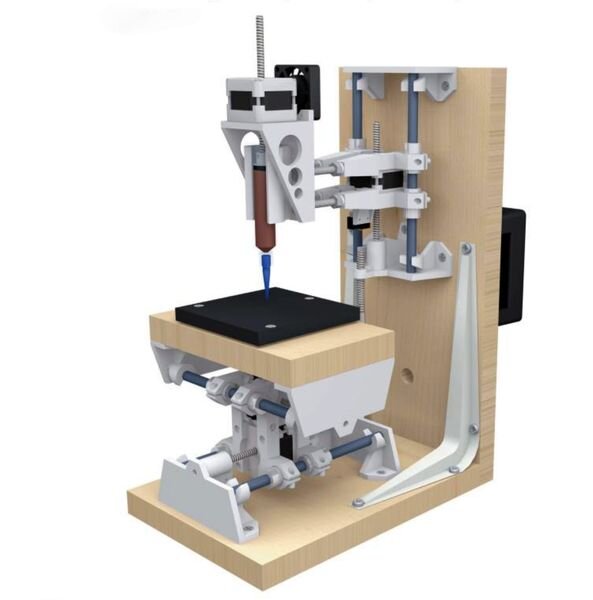![The Mini Metal Maker metal 3D printer [Source: Amazon]](https://fabbaloo.com/wp-content/uploads/2020/05/image-asset_img_5eb08c2e16900.jpg)
This week’s selection is “Build Your Own Mini Metal Maker” by David Hartkop.
This is a book about a DIY project, specifically the method of building a 3D printer-like device Hartkop calls a “Mini Metal Maker”. But is it really a metal 3D printer?
At first glance the device appears to be a syringe-based paste 3D printer. These are frequently seen, and typically used to 3D print objects such as certain flowy foods, ceramics like clay and similar pasty substances.
However, the twist here is that the Mini Metal Maker is designed to 3D print metal clay. This is basically clay that’s infused with a metal powder. You would 3D print this metal clay paste material into a desired shape, and then subject it to a post-print firing in a pottery kiln or similar furnace.
The heat will burn out the binder and sinter the metal particles together, leading to a fully metal 3D printed object. This is more or less the same process used by larger commercial systems such as those from Desktop Metal, although they have the process tuned to the hilt and thus offer extreme reliability and print quality.
But the Mini Metal Maker can actually produce metal 3D prints, if you’re using the right materials and process.
Metal 3D printers are typically fantastically expensive, so is there a catch here? Well, yes. You have to build the 3D printer yourself, and that’s what this book is about.
The Mini Metal Maker concept was first introduced several years ago as an Indigogo crowdfunding project, but it failed to obtain sufficient funding. It seems some units were produced, but all I can find of the project at this time is the leftover crowdfunding campaign, stray mentions and what seems to be a dead website.
And this book.
The book contains sufficient information for you to attempt to build the Mini Metal Maker on your own, should you have appropriate skills and components.
The device uses a powerful stepper motor to push the clay through the nozzle with precision control. Typical syringe 3D printers use compressed air to power the extrusion, but that is often challenging to control. If you want to suddenly stop the extrusion to move to a discontiguous portion of a layer, you risk messing it up.
That won’t happen on the Mini Metal Maker, whose motor allows for crisp extrusion starts and stops. This means you should be able to 3D print relatively complex objects, although you’ll have to consider overhangs carefully.
The book explains all the steps required to build the Mini Metal Maker, from the motion system to the extruder to the electronics to the firmware. It also explains in detail the software workflow required to operate the device, and even the post-print processing required.
Of course, you will need a suitable pottery kiln or sintering furnace in addition to the 3D printer, but those are readily available if you don’t already have one.
As for the design files and firmware, they are still available on GitHub for free download.
The design may be a bit older, but the functionality will be the same. If you’re interested in metal 3D printing at a low entry price, perhaps this is a route to consider.

